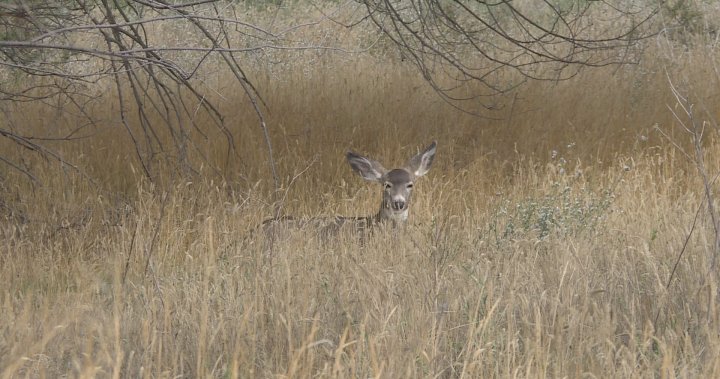
Fatal deer virus outbreak declared in Kingston region
Global News
Canadian wildlife officials are investigating a deadly virus outbreak affecting white-tailed deer in the Kingston region after more than 30 were found dead on Wolfe Island.
With deer hunting season beginning Monday in the Kingston region, Canadian wildlife officials are warning area hunters they may come upon deer already dead by a deadly virus.
The Ministry of Northern Development, Mining, Natural Resources and Forestry and the Canadian Wildlife Health Cooperative are investigating an outbreak of epizootic hemorrhagic disease that has left a number of deer dead in the area.
According to a recent blog post from the health co-operative written by wildlife pathologist Brian Stevens, the organization received reports of 30 dead deer on Wolfe Island at the end of September.
Then came additional reports of dead deer from Gananoque Lake, Stirling and Kingston.
Three deer were submitted to the co-operative for testing, and Stevens says an animal lab in Guelph found that they were infected with epizootic hemorrhagic disease.
Although there are no human health concerns from the virus, it can be particularly deadly among the deer population.
The ministry confirmed the outbreak, and said it’s working with the co-operative to investigate.
A statement from the ministry said the virus is very infectious and often fatal among white-tailed deer. It is spread through insect bites of midges commonly called “no-see-ums.”













